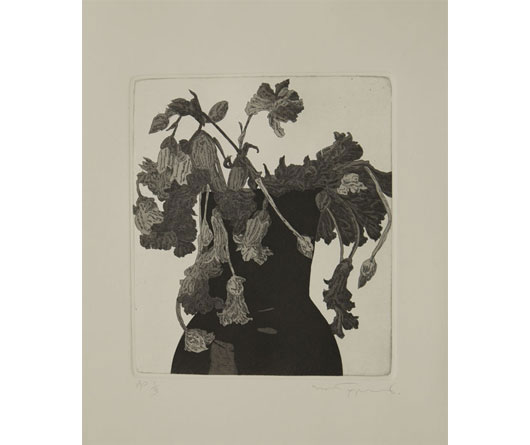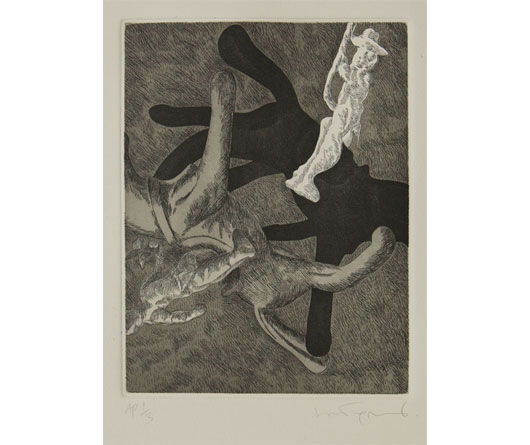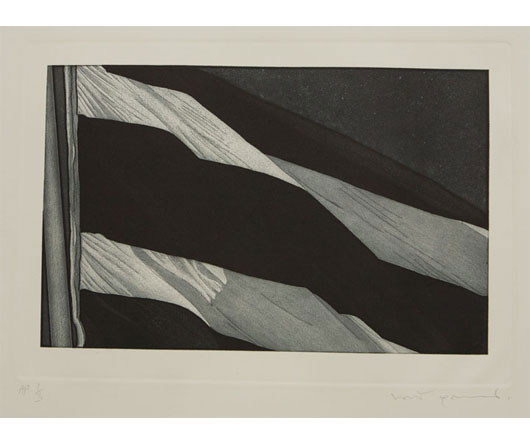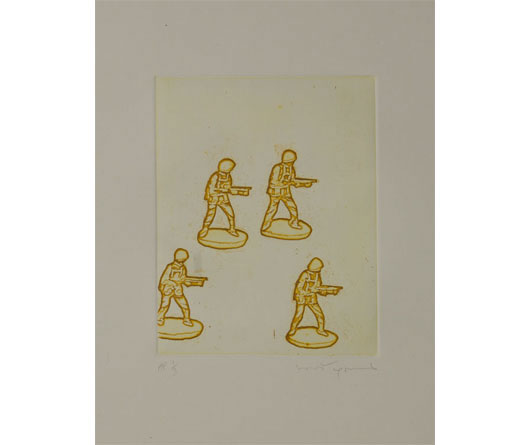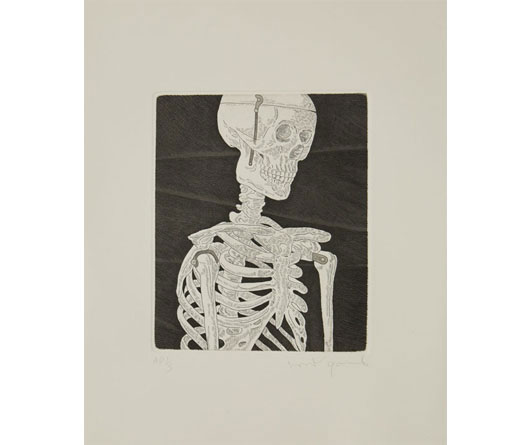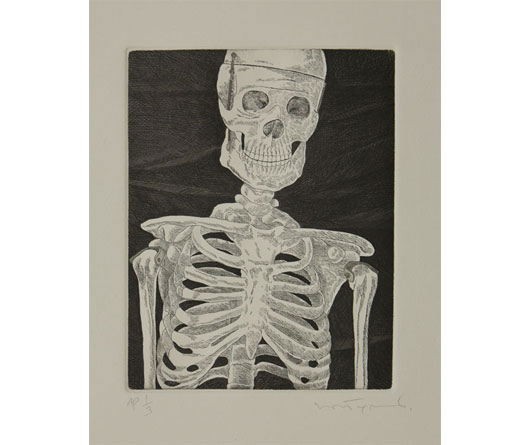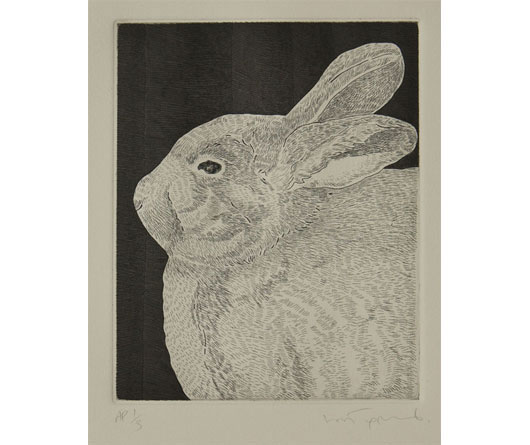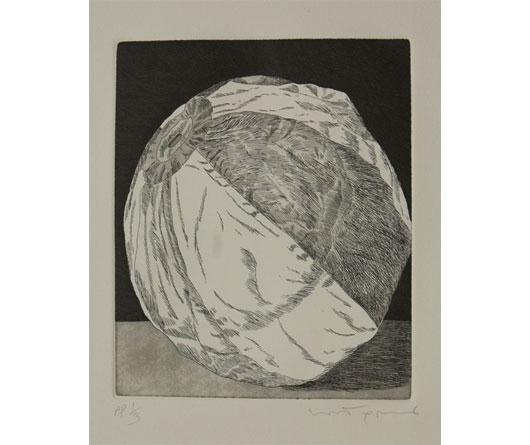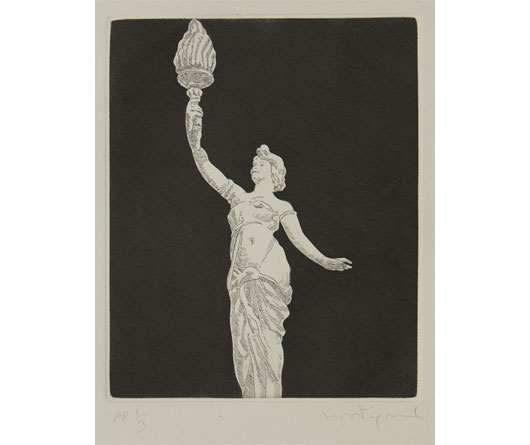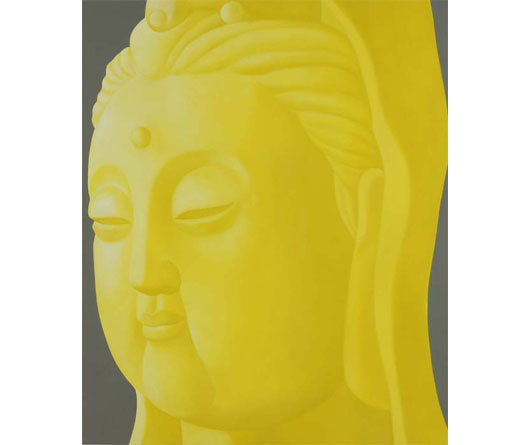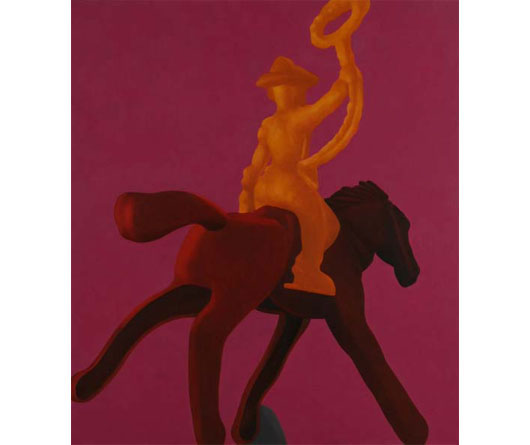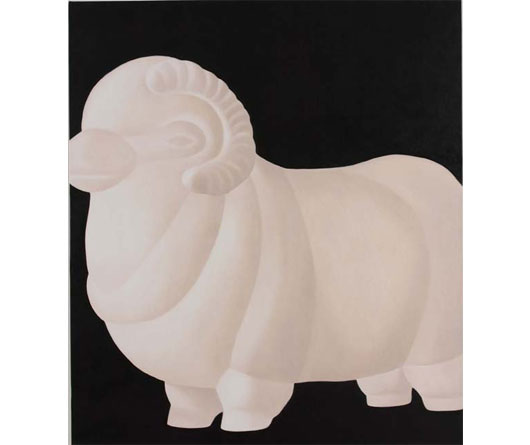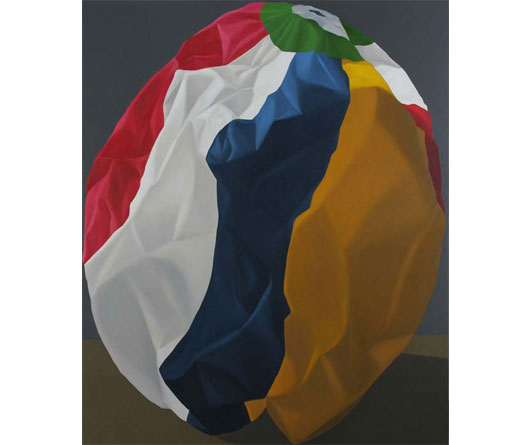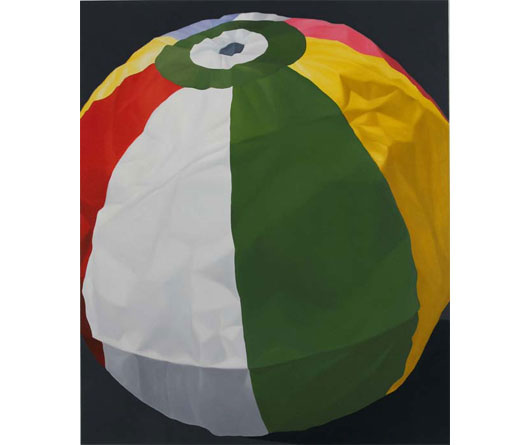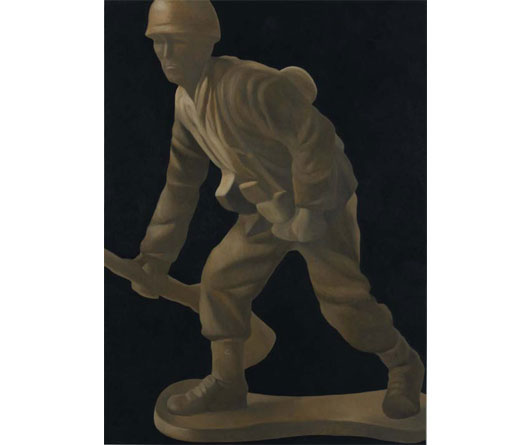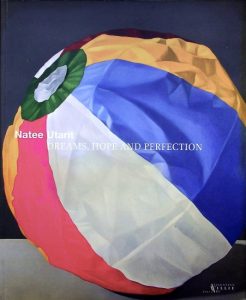Natee Utarit
Dreams, Hope and Perfection
Valentine Willie Fine Art is delighted to announce the third solo exhibition by Bangkok artist Natee Utarit in Kuala Lumpur, Dreams, Hope and Perfection. The exhibition will run from the 3rd August till 27th September 2008.
Natee has consistently chosen to work with objects that could be used as a ‘medium’ for conveying different meanings and ideas. This new series marks a conceptual break from past investigations. The artist here conjures the birth of Thai democracy and so modern Thai political history as a means of commenting on actual and pressing political issues.
By quoting known signs, codes and images out of context, and so conceptually distorting them, the artist consistently put form and vernacular at the service of his dialogue with the viewer, opening the images to a range of new meanings.
Beverly Yong: The paintings and prints in this exhibition are part of a larger body of works first shown in “The Amusement of Dreams, Hope and Perfection” (Chulalongkorn University Art Center, Bangkok, 2007). Could you explain how and when you came to the idea for this body of work, what inspired it?
Natee Utarit: Since 1999, I have been interested in the language of pictures and to explore the grammar of Painting. Between 2000 and 2006, I was trying to find and develop ways to present my own pictorial language through many different subjects.
My last show at the Art Center presented a kind of picture I was interested in and wanted to transfer to my painting. I got some inspiration for the painting style from old prints, photographs and graphic design from the 60s and 70s. (You can find this same sensibility in my small painting series entitled “Kyotek Sae-Wu photographs during 1969-1973”)
At the same time, I have also collected a lot of 1950s Thai children’s text books from rare bookshops. The ideas for all my paintings from 2006 to 2007 have come from here. When I wanted to talk about social and cultural problems in Thailand, this pictorial language seemed perfect to represent my subject to the Thai audience.
My work is always constructed beginning with questions and possibilities of style. Here are some examples of questions that relate to the object and “style” in these works:
– The image of the Thai flag was a popular subject in children’s books. Why?
– The Metropolitan Art Museum (Met) shopping bag is totally disconnected from the Asian art scene.
There are a lot of “The Met” shops in Asia but no museum – what is the meaning of this? By looking at such examples, I have found that many objects have their own peculiar significance. I just select such objects to use as the medium between my subject and the audience’s experience.
It has often been pointed out that you work on very discrete series or “projects” in terms of subject, or even “style”. Would you say that you deliberately avoid being associated with a particular style or subject? Why would this be? Would you say there are any particular ideas or concerns that bring together all these different approaches?
All my works are rooted in the same concept, presented as different variables of the possibilities of painting. I believe that there are more than 10,000 ways to paint a good image that communicates well. A lot of people think I have many ideas but am not stable in style and concept. In fact, there are many differences between the word “content”, or “subject”, and “concept”. People always think that content and concept are the same thing. The subject matter can change with time and experience. The style can change according to function. But not concept, the concept is something stable and should not change.
Glass, for example, is a stable concept, whether it has a geometric or organic form, or the fanciful shape of Mickey Mouse or Winnie the Pooh. Because you know what glass is, you understand that the form of the glass is the content and the function of glass is the concept. So, we would see that function of glass never changes, unlike its form.
That is the reason why I have used a variation of styles to express my concept – it gives me flexibility.
Much of your painting, in my mind, has explored ideas about truth and beauty, but also culture and memory. Here in Kuala Lumpur, we have seen works from the Reason and Monsters project (Recent Paintings, 2003), and also the exhibition The Fragment and The Sublime (2006). Both these exhibitions held elements of still life and landscape, using Western classical imagery. For me, both series address in different ways the difficulty of beauty, and the problem of art, specifically painting, and their cultural context. How does your new body of work link to such previous projects?
My paintings from 1999 to 2006 tried to question of the truth of painting and explore some hypothesis of western aesthetics in the Thai cultural context. Since late 2006 (during the Kyotek series), I began to think back about myself in my own context with such questions in mind. My sense of memory and the past led me to the mythification of western civilization in the Asian context, which you can see in The Fragment and The Sublime paintings (2006). Working from the same idea, I have added three new elements in the new paintings. First, a sense of the past, and childhood, in my reference to antique prints and toys; secondly, myths in Thai culture; and finally, Western influence in Thai (and world) history.
For me, these new works seem very different from previous projects in that they appear to make a statement, with a strong political undercurrent. The symbolism of the objects you choose is also much more loaded, and overt, than in earlier paintings, where we are often left guessing at the significance of the subjects depicted. Would you say this “political” element is new, and how would you describe the “politics” of your painting? How do you reconcile your concerns with truth and beauty, for example, with the political motivation of these works?
Everybody thinks that my work is heading in a political direction because one of my paintings is entitled “The Micro History of Politics”. While the term “micro history” comes from a text by Nietzsche, and George Orwell’s Animal Farm is an important reference for this painting, seeming to underline a political significance, the painting does not describe a political problem only. I still want the painting to talk about other relationships, besides the political, such as the conflict between myth and truth.
Another “new” aspect is the obvious “Thai-ness” in many of the works, especially in the first exhibition in Bangkok – the Thai flag, images of Buddha, Thai script, the statue of Rama IX. Previously, you have avoided such straightforward references to Thai culture. The cultural “tension” or focus has tended to be with Western culture and art history. Why this change?
I would like to think of it as a new stage of development. Every series I have made so far has referred to Western culture and imagery. I have tried to omit Thai-ness for a long time because I’ve never known what was truly Thai in the cultural sense.
What is Thai style?……Temple?
What is a Thai symbol?……Lotus?
These represent Thai-ness from a Western viewpoint which Thais (and Asians) have also adopted.
I have thought about this topic seriously and have tried looking back at history. The question of western aesthetics made me investigate ideas of real Thai identity, and the fake Thai identity propagated by the government. I found that the West has had a strong influence, and may have been a cause of cultural tension from a hundred years ago till the present.
Could you describe how you see and approach the cultural and artistic relationship between East and West?
In the context of contemporary art, I believe in an intellectual foundation more than established styles from east or west. I cannot find the real border between the both of them. When we talk about the East, we usually refer to the spirit of China or Japan (how about Laos or the Philippines?). And with the West, we mean England or America only (as in the case of popular music). I think a lot of artists try to project their national identity in their work because they think it is the one thing that makes their art relevant. I agree that it can seem important in certain contexts, like the Asian art scene now. But, in my mind, I do not like this thinking. Perhaps I am wrong, but can you imagine when western (and also Asian) curators come to my country and try to pick “Somtam” or “Tomyam” or stereotypes like that only?……I have never liked that.
So to answer your question, I don’t try to approach the East-West relationship. I let the content construct the sentences of my paintings by not trying to keep to a Thai or create a new Western sensibility.
The paintings in this particular exhibition in Kuala Lumpur seem to address a slightly different context from the first show in Bangkok. How do they differ and why? Could you tell me something about the ideas behind the different images in this particular exhibition – some have very strong titles, like Ball of Greed and Illusion, or Viva Colonialism?
In the Art Centre show, there were two parts to the exhibition space because I wanted to separate the content into two “layers”. The first layer was aimed at an audience with an understanding of the Thai context and the second presented a wider range of subjects. For example The Met bag – here I‘m talking about the strange condition of Asian art in the capitalistic climate of the past five years.
You mean the regional art “boom”, I suppose. If I understand correctly, The Met bag can be seen to represent a situation where the desirability of an object, or the image of an object, supersedes any other prior significance. Like a glamorous paper bag that stands for “art”, but whose main attraction is in the label… In Singapore and Bangkok, the public can only access The Met shop and its merchandise, but not the museum itself or its collection in New York – it seems strange to you that a museum would make such a “label” a product and export it.
Yes. In this exhibition, The Ball of Greed and Illusion addresses similar concerns. I also look at colonialism. Colonialism began in Europe. I think most people know what colonialism is. How does it operate today?Can you see the contemporary colonisation of Asian Art?
You decided to make a series of etchings based on the paintings you have made over the past two years. You had previously studied printmaking, and also worked with printmakers during your residency at STPi in Singapore in 2006/7. What attracts you to the print medium and why did you decide to make prints for this particular body of work?
I have always loved this medium. In making paintings as well as prints, I am like a painter in 17th century, my favourite period.
The paintings have the extraordinary detachment of the still-life, and yet looking at them as a whole I feel a deep emotional charge. What emotion would you say underlies this project?
I want my paintings to have the atmosphere of a place that is difficult to determine as either dream or reality. The images do not identify time or place but they are still lit from an unknown source. Caravaggio and Vermeer used similar methods.
Where do you think this project will lead you to next?
I plan to do many things in the next year. I have many projects that I wish to do but my work is painting, in the old traditional style and medium, so it’s very difficult to do it all at the same time. Now, I’m very interested in a few books about the relationship between Siam and old France, and Siam and Europe in the 19th century. Also the great novel entitled “All quiet on the western front”……
